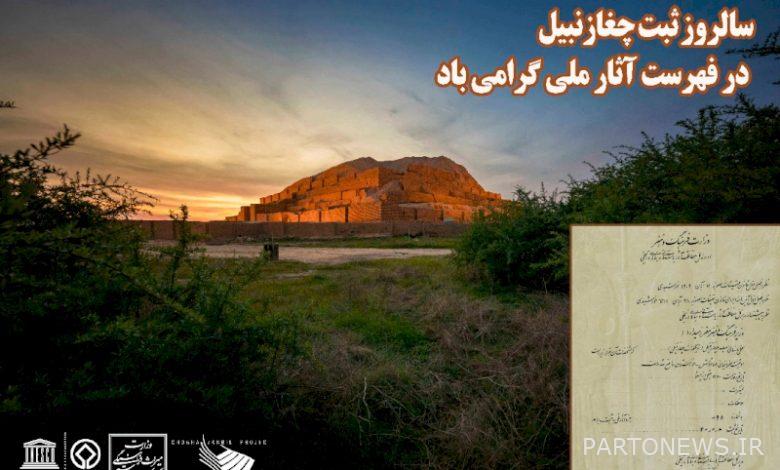52 years old, registration of Choghaznabil ziggurat in the list of national monuments

This world-famous work that tries to take us to the depths of the history of this border and landscape, has been silent in the corners of our viewers for years, sometimes we close our ears to his lips and try to hear him a little, sometimes we look at him carefully, maybe a new corner in his historical music Let’s find out, sometimes we do not know his language and reading his wishes is not as it should be, but there is a rough, long and of course pleasant way ahead; During the life of this great temple, we and the generations before us, fall and rise and move in the way of its maintenance and correct interpretation. May it be acceptable to the nature of the people.
The Choghaznabil Ziggurat, the largest and most stable remnant of the legendary city of Ontash, which was dedicated to Inshushink as evidenced by its writings, was registered in the list of national monuments of Iran on February 26, 1980, with the number 895. According to the constitution and the Civil Service Management Law, one of the sovereign duties of the government is to protect the country’s cultural heritage. The first way to protect this heritage is to register historically and culturally valuable works in the list of national monuments. It is clear that the path to conservation goes beyond a general understanding of society and an awareness of the concepts of cultural heritage before going through large financial and investment programs and credits.
Despite the efforts of cultural activists and skilled stakeholders to raise public awareness, unfortunately the attitude towards “cultural heritage” in recent years has shifted towards a word with inconsistent interpretations combined with misinterpretation or, ultimately, fanaticism and a museum view far removed from public understanding. In the meantime, the status of cultural treasures (irreplaceable historical monuments) has gone from opportunity to threat. Why? How is it possible for a society to identify itself as the natural enemy of its sustainable development from any point of view? The lack of an appropriate education and awareness-raising system for the correct interpretation and presentation of cultural heritage as an infinite and lasting cultural wealth has pushed societies to oppose it to the point that even macro-planners sometimes refer to this man-made blessing as a brake on development.
Now that we are in the age of knowledge and technology, it is imperative for each of us, with every excuse and door, to open a window to teach the importance of protecting and upholding and respecting the laws of these works. In the meantime, the Choghaznabil and Hafta Tappeh World Heritage Sites are trying to emphasize the importance of the issue under various pretexts, and in this direction, they need the support of the community to achieve their awareness-raising goals; We believe that the path of the country’s progress and prosperity passes through a ladder that is based on the depth of our history.
Choghaznabil and Hafta Tappeh World Heritage Site invites all those who have a heart for the homeland to make every effort to introduce and recognize the ancient roots and foundations of this land, so that we can all step together on the steps of sustainable development and progress of this country. Every Iranian should be a witness to the past and future of this country.
What is my homeland, to say that you are your body / that you are alive and all your light is alive
.

